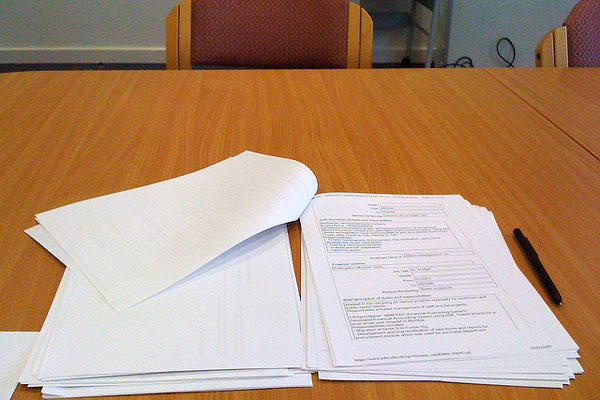Putting your resume together can feel like working out the alchemical formula that turns lead into gold: it's arcane, aggravating, time-consuming, and there's probably no perfect solution. But do not fret: There are many words of wisdom on the subject.
If you're scratching your head about best practices, think about your resume from the perspective of the intended audience: human resources staff and hiring managers. Inspired by a piece in Time, we've collected a few tips on how to do just that.
Related: Does your resume pass the 6-second test? Get a FREE assessment.
1. Your Experience, Education and Skills Should Be Immediately Identifiable.
Time is precious to everyone, especially to anyone reading your resume. Why? Because they're reading dozens, if not hundreds, of others. Make sure that your resume highlights your work experience, education and relevant skills in such a way that anyone could skim the paper in a few seconds and point that information out.
That doesn't mean you should make your info skimpy; it means your formatting needs to be on point. Hand your resume to a few people and ask them how fast they can find this critical information. If most people take more than a minute, you need to fix a few things.
2. Why You Want to Work Where You're Applying and How You're Qualified Should Be Obvious.
If you're pushing the boundaries of common sense in how your work history relates to the job you're applying for, consider how to connect the dots for everyone else. Employers need to see a through-line in your career that leads to your current ambitions, but that can be a problem if you don't have much experience in the industry or are changing careers.
An easy method is using an objective statement near the top of your resume. While it's usually not necessary, it can give employers a quick glimpse into why your resume doesn't have as much traditional work history as other applicants.
3. Your Entire Resume Needs to Be Skim-able.
Time is an issue, but how big of a one? Don't overestimate how much time recruiters will actually take to look at your resume. Assume that it's less than 20 seconds, because most experts believe the majority of recruiters never read for longer than that.
Can you figure out all the key points in your resume in 20 seconds? Try timing yourself. It might be a struggle to condense everything, but the more you struggle to make your resume skim-friendly, the easier it will be for recruiters to understand why you're qualified for the job.
4. Keep in Mind that HR Usually Screens Resumes Before Hiring Managers See Them.
If your job comes with a lot of technical jargon, this is a good time to dial it back a little bit. Well, not completely. You need to flaunt your knowledge a little bit, but the point is that your resume needs to be understood by people who aren't experts in the same things you are. Don't slip into casual slang too much, keep it relatively light and you'll have a better shot at getting through.
5. Scrutinize Your Contact Information.
Unlike most things in life, unless you're an editor, perfect grammar and spelling are absolute must-haves on any resume. And nowhere on the resume is this more important than where you put your contact information.
If a single digit or letter is out of place, the hiring manager won't be able to contact you properly. At best, they'll note the mistake, and that might have a very adverse effect on your chances.
Related: For the latest veteran jobs postings around the country, visit the Military.com Job Search section.
The Next Step: Get Your Resume Out There
Get your resume seen by companies that are seeking veterans like you. Post your resume with Monster.com.











